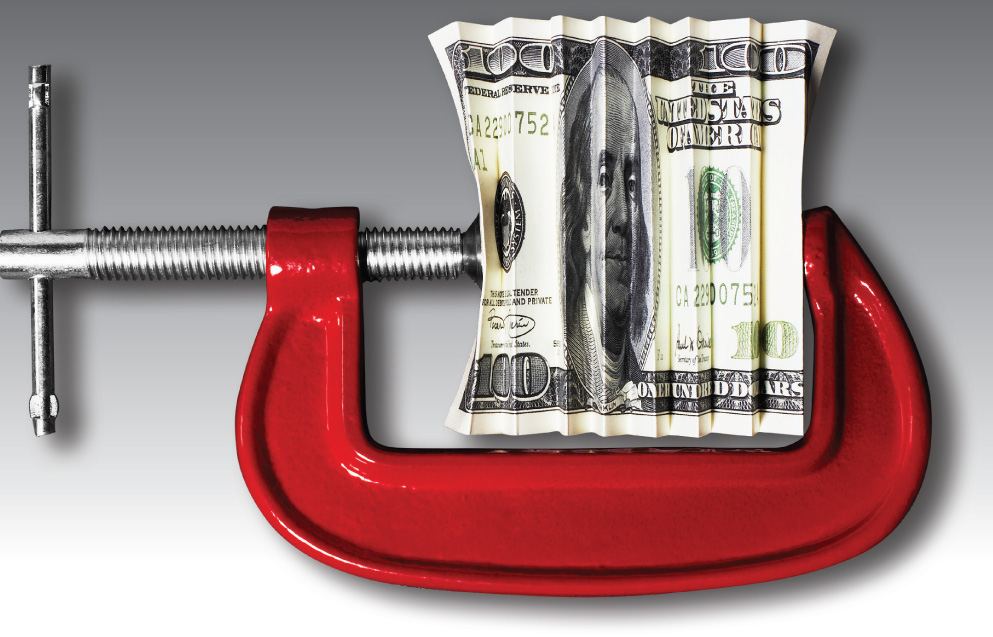
Since August 2008, the month before Lehman Brothers collapsed, the supply of publicly produced base money has more than tripled, while privately produced money has shrunk by 12.5% — resulting in a decline in the total money supply (M4) of almost 2%. In consequence, the share of the total broad money supply accounted for by the Fed has jumped from 5% in August 2008 to 15% today.
The disturbing course that has been taken by the money supply in the U.S. shows why we had a bubble, and why the U.S. is mired in a growth recession, at best (see the accompanying chart). If Fed chairman Ben Bernanke had a money-supply indicator — any money-supply indicator — on his dashboard, he would, well, see reality. Money matters.
It is clear that while Fed-produced money has exploded, privately produced money has imploded. The net result is a level of broad money that is way below where it would have been if broad money had followed a trend rate of growth.
The post-crisis monetary-policy mix has brought about a massive opening of the public money-supply spigots, and a significant tightening of those in the private sector. Since the private portion of the broad money supply in the U.S. is now five and a half times larger than the public portion, the result has been a decrease in the money supply since the Lehman Brothers collapse. So, when it comes to money in the U.S., policy has been, on balance, contractionary — not expansionary. This is bad news, since monetary policy dominates fiscal policy.
Wrongheaded public policies have put the kibosh on banks and so-called shadow banks, which are the primary private money-supply engines. They have done this via new and prospective bank regulations flowing from the Dodd-Frank legislation, new (more stringent) Basel III capital and liquidity requirements, and uncertainty as to what Washington might do next. All this has resulted in financial repression — a credit crunch. No wonder we are having trouble waking up from this nightmare.
The picture for the eurozone, absent Germany, looks very similar to that of the U.S., while the German picture looks rather healthy. Indeed, Germany’s money supply is above where it would have been if it was growing at a trend rate. This peculiarity is occurring, in part, because hot money is taking flight from places like Greece and Spain and flowing into Germany. This pumps up the German money supply. It’s no surprise, therefore, that the German economy is a picture of health relative to the rest of Europe.
This brings us to the Eurosystem’s doom loop. It’s clear that the sick ones are pleading for an assist from the largest and healthiest one, Germany.
This, of course, is creating a great deal of angst among the Germans. Today, German taxpayers’ exposure to the weaker countries represents at least one quarter of Germany’s GDP, and it’s rising. Facing a bill like that, German Chancellor Angela Merkel has recently pushed back and stated the obvious: “Germany’s strength is not infinite.”
What can be done? For a start, new, excessive bank regulations should be scaled back, or scrapped altogether — particularly when we’re in the middle of the worst slump since the Great Depression. Such a roll-back would alleviate financial repression, allowing the banking system to increase the privately produced portion of the broad money supply. Since excessive and untimely regulation is what’s holding down broad money growth, this is just what the doctor ordered.
Remember, it’s the money supply, stupid.
Author Steve H. Hanke

0 responses on "Why U.S. Is Now in a Credit Crunch"